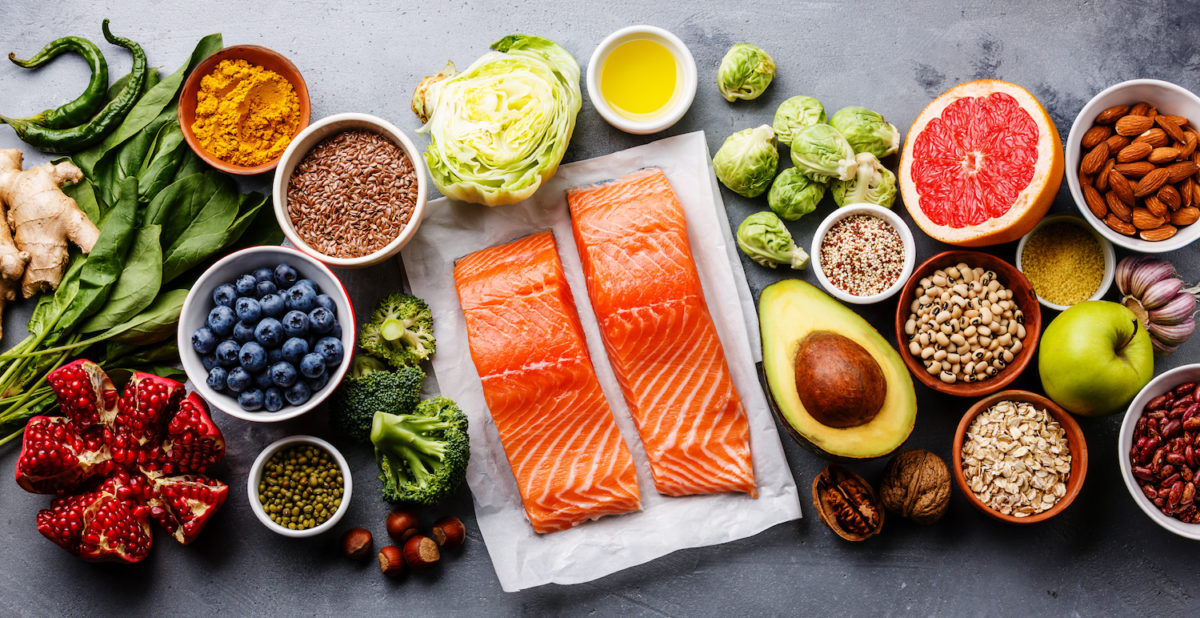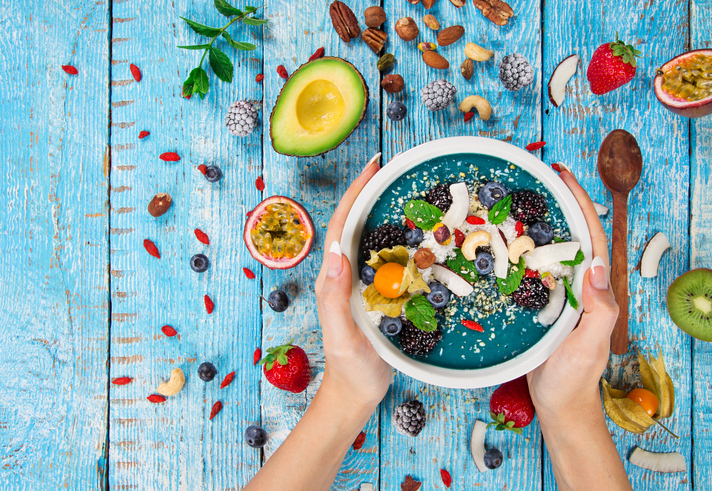Superfoods
For years, people have touted the powers of superfoods. Thought to benefit your overall well-being, these foods have been linked to a sharper mind, clearer skin, a healthier immune system, and more. Superfoods are foods that have a very high nutritional density. This means that they provide a substantial amount of nutrients and very few calories. They contain a high volume of minerals, vitamins, and antioxidants.

Antioxidants are natural molecules that occur in certain foods. They help neutralise free radicals in our bodies. Free radicals are natural byproducts of energy production that can wreak havoc on the body. Antioxidant molecules decrease or reverse the effects of free radicals that have close links with various health problems including heart disease, arthritis, stroke, and respiratory diseases.
Some of our favourite superfoods and how to include them:
Berries: High in fibre, berries are naturally sweet, and their rich colours mean they are high in antioxidants and disease-fighting nutrients.
How to include them: Add to yoghurt, cereals, and smoothies, or eat plain for a snack. When berries are not in season, it is just as healthy to buy them frozen.
Fish: Fish can be a good source of protein and omega-3 fatty acids, which help to prevent heart disease.
How to include it: Fish with the highest omega-3 content are salmon, tuna steaks, mackerel, herring, trout, anchovies, and sardines. Buy fresh, frozen, or canned fish.
Leafy greens: Dark, leafy greens are a good source of vitamin A, vitamin C, and calcium, as well as several phytochemicals (chemicals made by plants that have a positive effect on your health). They also add fibre to the diet.
How to include them: Throw them into salads or sauté them in a little olive oil. You can also add greens to soups and stews. Try varieties such as spinach, swiss chard, kale, collard greens, or mustard greens.
Nuts: Hazelnuts, walnuts, almonds, pecans — nuts are a good source of plant protein. They also contain monounsaturated fats, which may be a factor in reducing the risk of heart disease.
How to include them: Add a handful to oatmeal or yoghurt, or have as a snack. But remember they are calorically dense, so limit to a small handful. Try the various types of nut butters such as peanut (technically a legume), almond, or cashew. Nuts are also a great accompaniment to cooked veggies or salads.
Olive oil: Olive oil is a good source of vitamin E, polyphenols, and monounsaturated fatty acids, which help reduce the risk of heart disease.
How to include it: Use in place of butter or margarine in pasta or rice dishes. Drizzle over vegetables, use as a dressing, or when sautéing.
Coconut oil: Coconut oil contains medium-chain triglycerides (MCTs). Your body uses MCTs as a quick source of energy or turns them into ketones. Ketones can have powerful benefits for your brain, epilepsy, Alzheimer’s disease, and other conditions.
The MCTs in coconut oil are beneficial for healthy thyroid function, can encourage your body to burn fat, and can raise HDL (good) cholesterol.
As well as this, coconut oil has anti-microbial and anti-inflammatory properties that reduce inflammation and inflammation triggers such as intestinal microorganisms.
How to include it: Coconut oil has a high smoke point so it’s perfect for frying, roasting or sautéing. It’s also very useful in desserts or baking as a replacement for butter, and can be used as a dairy free spread on bread or crackers. A spoonful in a hot drink makes a satisfying and nourishing alternative to cream.
Yoghurt: A good source of calcium and protein, yoghurt also contains live cultures called probiotics. These ‘good bacteria’ can protect the body from other, more harmful bacteria.
How to include it: Try eating more yoghurt, but watch out for fruited or flavored yoghurts, which contain a lot of added sugar. Buy plain yoghurt and add your own fruit. Look for yoghurts that have ‘live active cultures’ such as Lactobacillus, L. acidophilus, L. bulgaricus, and S. thermophilus. You can use yoghurt in place of mayonnaise or sour cream in dips or sauces.

Cruciferous vegetables: These include broccoli, Brussels sprouts, cabbage, cauliflower, collard greens, kale, kohlrabi, mustard greens, radishes, and turnips. They are an excellent source of fibre, vitamins, and phytochemicals including indoles, thiocyanates, and nitriles, which may prevent some types of cancer.
How to include them: Steam or stir-fry, adding healthy oils and herbs and seasonings for flavour. Try adding a frozen cruciferous vegetable medley to soups, casseroles and pasta dishes.
Legumes: This broad category includes kidney, black, red and garbanzo beans, as well as soybeans and peas. Legumes are an excellent source of fibre, folate, and plant-based protein. Studies show they can help reduce the risk of heart disease.
How to include them: Add to salads, soups and casseroles. Make a chili or a bean-based spread such as hummus.
Tomatoes: These are high in vitamin C and lycopene, which have been shown to reduce the risk of prostate cancer.
How to include them: Try tomatoes in a salad or as a tomato sauce over your pasta. You can also put them in stews, soups, or chili. Lycopene becomes more available for your body to use when tomatoes are prepared and heated in a healthy fat such as olive oil.
Including superfoods as part of daily nutritional intake is great but only when consuming a healthy, balanced diet overall. Eat a ‘super diet’ rather than concentrating on individual foods.
Sourced:
https://www.womansday.com/food-recipes/food-drinks/g2211/best-superfoods/
https://www.health.harvard.edu/blog/10-superfoods-to-boost-a-healthy-diet-2018082914463
https://www.livescience.com/34693-superfoods.html
https://www.nzherald.co.nz/lifestyle/news/article.cfm?c_id=6&objectid=12185139

